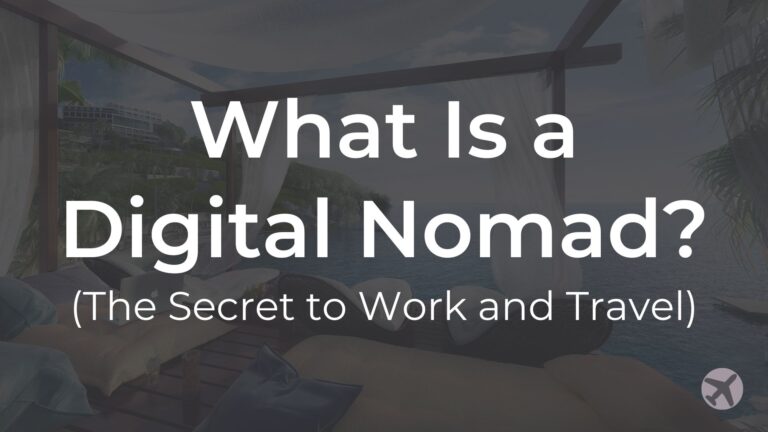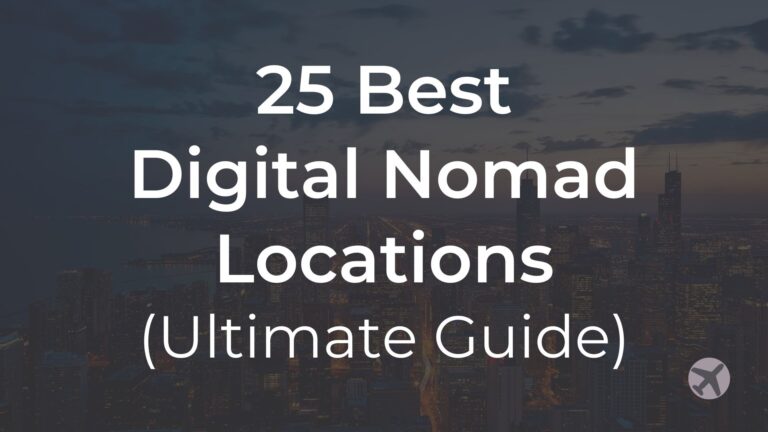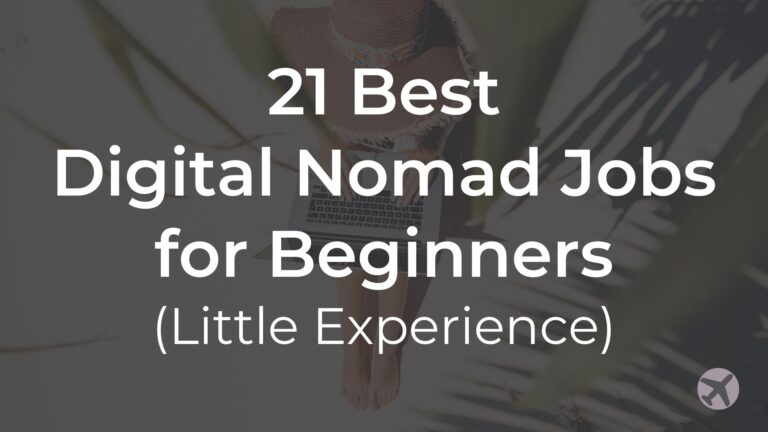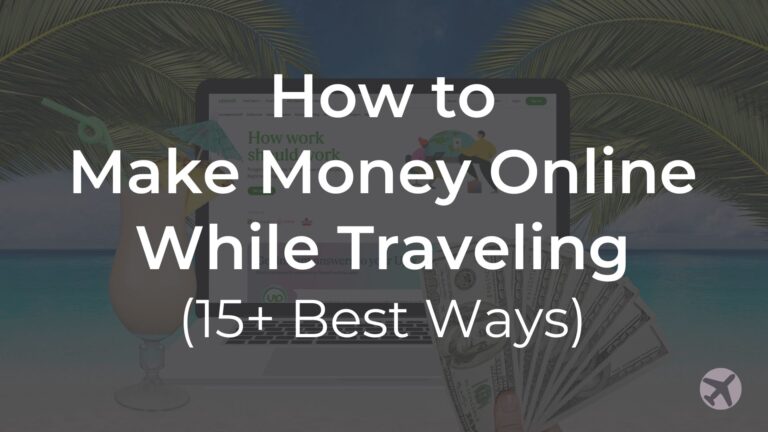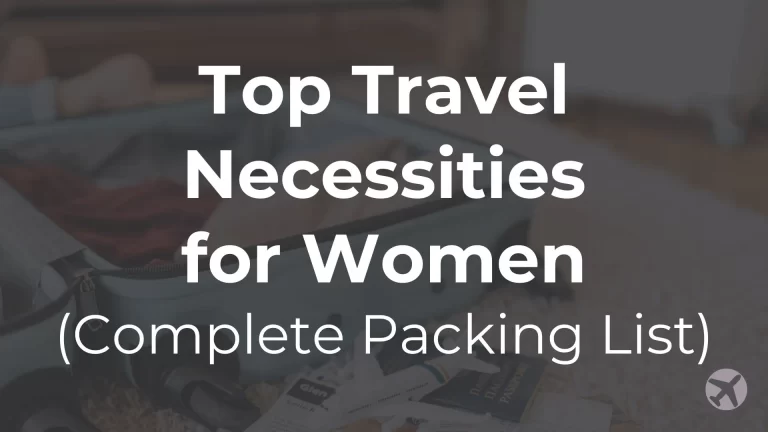How to Become a Digital Nomad With No Experience | 2025
I get it – the thought of working remotely on your own terms while you’re traveling the world sounds super appealing.
That’s why I’m giving you a full step-by-step guide on exactly how to become a digital nomad with no experience.
No more grinding away at that boring 9-to-5 office routine counting down the days until your next vacation.
That’s why I quit my job over 2 years ago and became a part-time digital nomad. Now, I do freelance video editing (where I earn 2x as much as my old job) while I travel for 2-3 months at a time. It’s perfect for me!
If you’re feeling trapped in your life and craving the freedom to travel and set your own schedule, then keep on reading because in this article I’ll go over some pros and cons to digital nomadism, teach you how to become a digital nomad in 2025, even if you have no experience, and I’ll dive into some tricks and long-term strategies that every nomad needs to be successful.
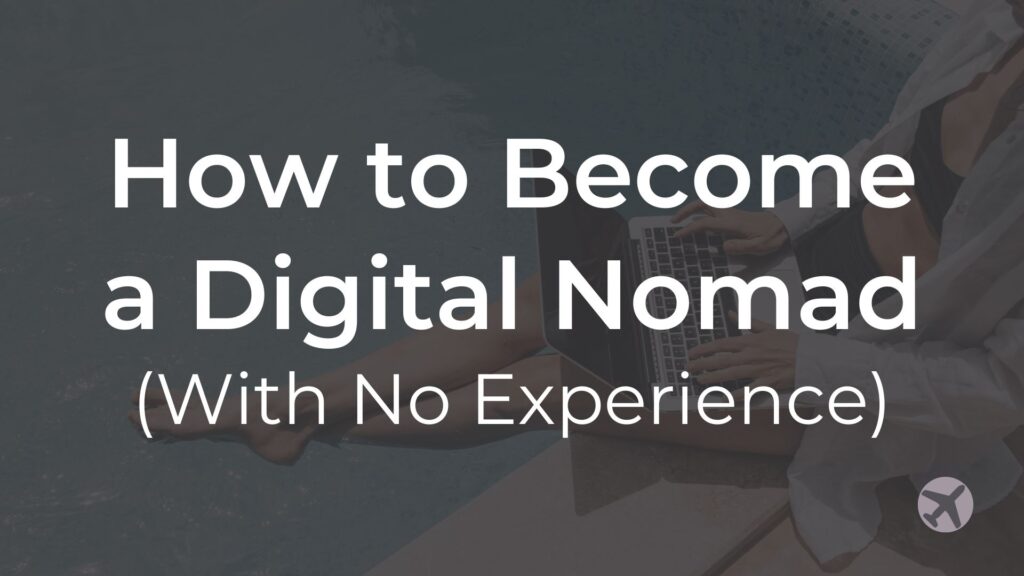
This post may contain affiliate links and is a member of the Amazon Services LLC Associates Program. If you make a purchase using one of these Amazon links, I will receive compensation at no extra cost to you. See my Disclosure Policy for more information.
What Is a Digital Nomad?
A digital nomad is a remote worker who has the location independence to work from anywhere in the world. They enjoy the freedom to work and travel wherever they want, as long as they have internet access.
Occasionally, a digital nomad can also be someone who works in person at short-term or seasonal jobs, allowing them to move around once the job is finished.
Benefits of Being a Digital Nomad
There are many advantages to being a digital nomad, including:
- Location freedom: The ultimate lifestyle to travel more often.
- Personal and professional growth: You have to learn to go outside your comfort zone, which always leads to growth.
- New adventures: Every day is something different.
- Experience different cultures: Spending long periods of time in different cities really helps to embrace local cultures.
- Meeting new people: Not only will you be meeting locals, but the digital nomad community is no joke. Everyone is excited to meet like-minded people!
Cons of Being a Digital Nomad
- Loneliness: Even though you meet a lot of great people, digital nomad loneliness can really hit you when you realize everyone around you is always changing.
- Potentially unstable income: If you’re self-employed, your next paycheck isn’t always guaranteed so it takes some adjusting to plan for the financial highs and lows.
- Tax complications: Different countries have different tax laws, even if you’re a digital worker. So keeping up can be a bit of a headache.
- Internet connection: Obviously you’ll need good internet to work remotely, and sometimes this can be hard to find.
- Time zone differences: Adapting to new time zones can throw off your schedule. Also, it makes it harder to stay in touch with loved ones back home.
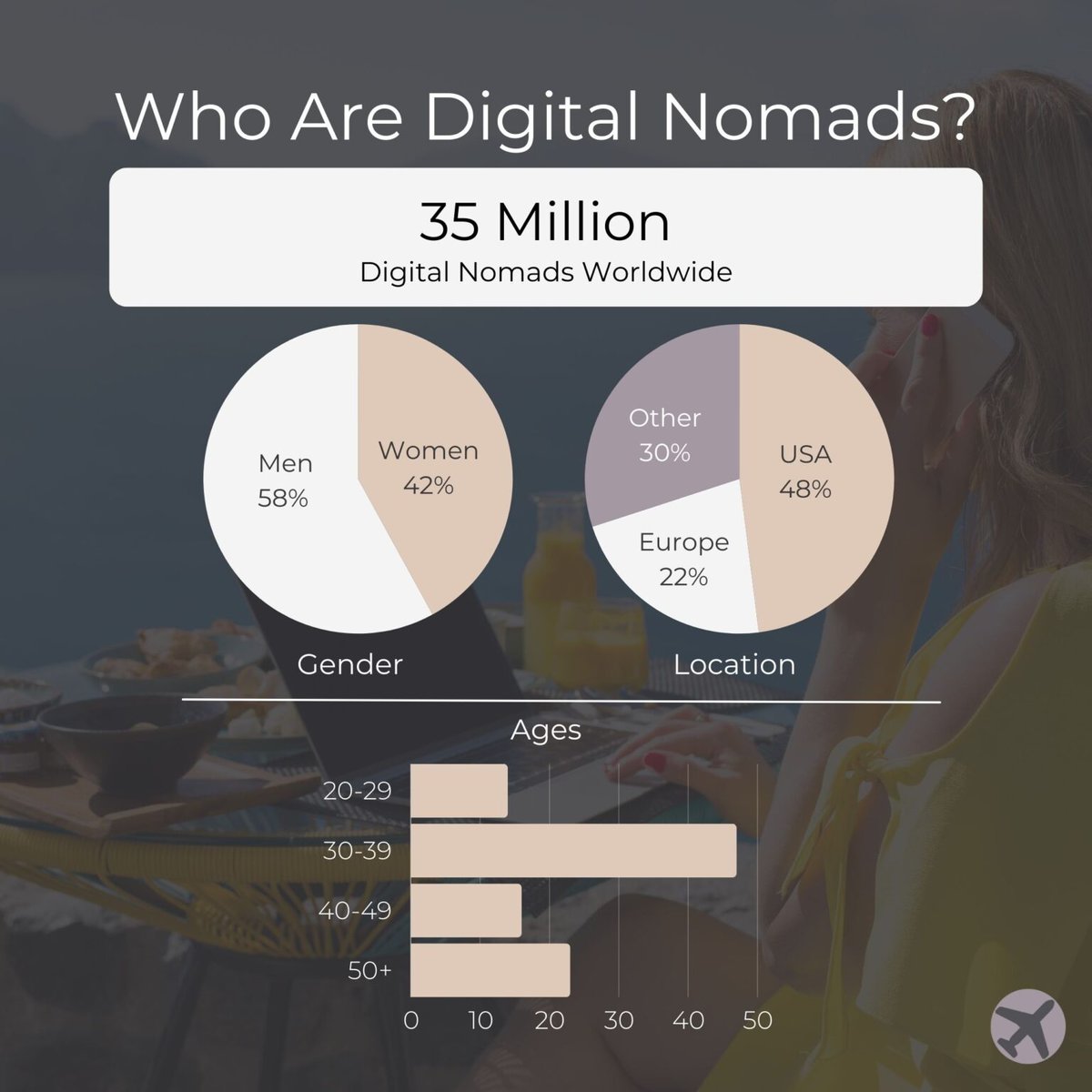
What Does It Take to Become a Digital Nomad?
You really don’t need any experience if you want to become a digital nomad. But you will need some particular skills to succeed:
- Motivation and determination: You’ll need the motivation to find a remote job, which will probably require you to brush up on some skills. This is where a lot of people first fail – they want to make money online while traveling, but they lack the motivation to actually get started and find their first remote job.
- Discipline: Once you’re out traveling, you’ll need to have discipline to succeed. You will need to find time to work and manage your expenses carefully.
- Open mindset: Plans can change in an instant. Oftentimes, you need to be flexible and just go with the flow.
(Step-By-Step) Learn How to Become a Digital Nomad Without Experience
Step 1: Start Putting Money Into Savings & Reducing Lifestyle Cost
To start your digital nomad journey, you need to focus on two crucial things: saving money and cutting down on lifestyle costs.
It can take about six months to successfully set up your new nomadic lifestyle, so you’ll want to start setting aside as much money as possible right away. With a life of adventure, new costs can pop up at any time and you’ll want to be prepared.
I started by chopping every non-essential from my budget. And I still do that today. Try to be more considerate about what you spend your money on – for me, that meant buying less stuff on Amazon that I probably didn’t really need.
And no matter how long you’re planning to travel, you’ll need to become a nomadic minimalist. Try reducing your possessions and learning to live with less, even if that means wearing the same outfit every other day.
When you’re on the go, you don’t want to be lugging big suitcases up a million flights of stairs or a mile down cobblestone streets. I traveled around Europe for 10 weeks with my carry-on and small duffle bag, mastering minimalist packing for long trips. (Hint: Capsule wardrobes are your new best friend)
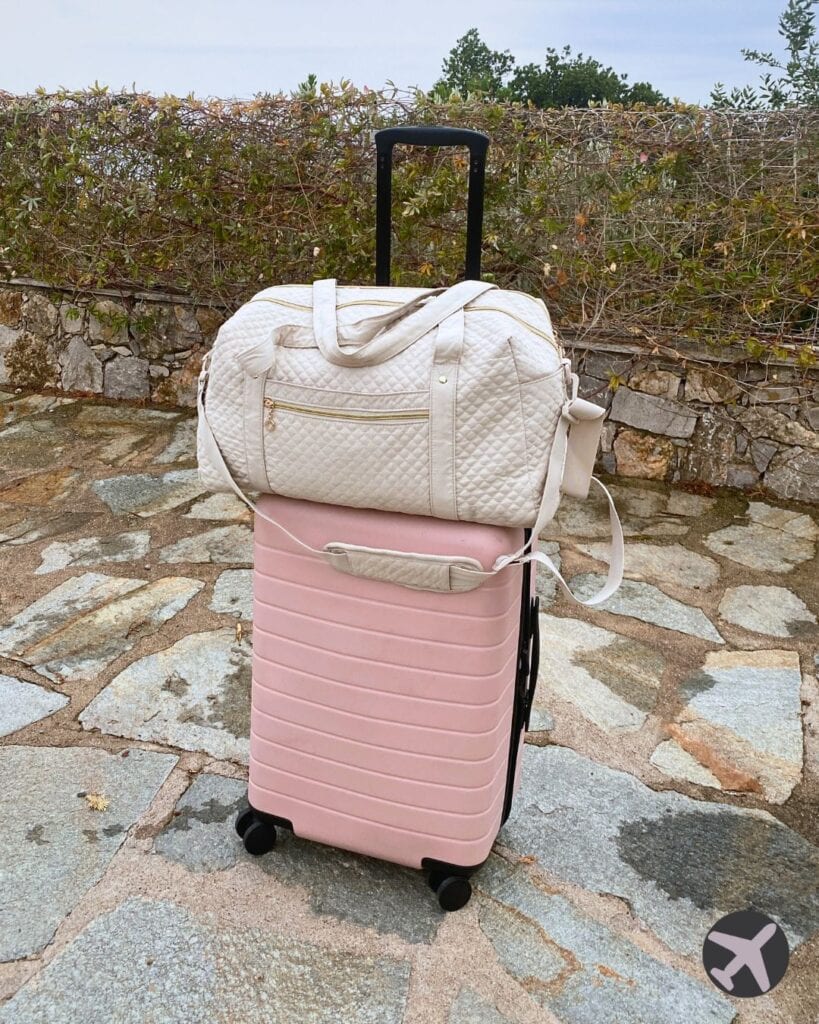
Step 2: Assess Skills for Your Digital Nomad Job
To find work online, you’ll need to understand your current skills, especially if you have no experience.
Are you good at writing? Then maybe freelance writing could work. Or perhaps you have a knack for organization and communication; then being a virtual assistant might be the way to go.
Identify the skills you have and how they can align with a job that interests you. There’s countless ways to make money online!
Common Jobs for Digital Nomads
Here are a few of the best digital nomad jobs with no experience needed:
- Data Entry – This might not be the most glamorous job, but it’s flexible and you can work from home. Get paid for inputting data into spreadsheets for companies.
- Customer Service Representative – Reply to customer emails and help them out while following company policies.
- Online English Teacher – Teaching English online is in high demand. Connect with students online over video calls and help them practice their English.
- Virtual Assistant – If you like organizing and scheduling, this could be a perfect job for you. I’ve seen virtual assistants turn their freelancing service into an entire online business.
- Copywriter – Writing persuasive text for websites, ads, and blogs. All you need are some decent writing skills that you can build on.
- Social Media Management – If you have any familiarity with social media or SEO, you can use that knowledge to help businesses and influencers manage their accounts and boost their online presence.
Step 3: Find Remote Work as a Digital Nomad With No Experience
Build Up Your Skills
When you’re starting out with no experience, you’ll need to build up your skills to become qualified for the job.
Look into free or low-cost online courses for the job route you’re going down. It’s easy to find short classes online for digital marketing, coding, graphic design, virtual assistants, etc.
Getting any kind of certificate from these courses will greatly increase your resume and make you stand out.
Create Your Resume and Portfolio
Once you have that certificate, throw it on your resume. Build a tailored resume specifically for the job you’re after – don’t be afraid to really sell your skills!
For certain jobs like copywriting or graphic design, you’ll need to create a portfolio showing off your best work. No one will know you created these pieces just for your portfolio. They’ll likely think you made them for a past client.
Use Job Boards to Start Applying
If you’re going the fully remote employment route, you can find tons of remote positions on:
If you’re going the self-employed route, create profiles and send out job requests on sites like:
Join Digital Nomad Facebook Groups and Collaborate
You can find many digital nomads on Facebook groups, which is a great way to chat with like-minded travelers.
People share job opportunities, travel advice, and tips on living as a digital nomad. It’s also a great way to learn about managing work while exploring from people who have done it themselves.
Some of my favorite Facebook groups I’m in are “Digital Nomad Jobs – Remote Work From Anywhere,” “Digital Nomads Around the World,” “Female Digital Nomads,” and “Girls LOVE Travel.”
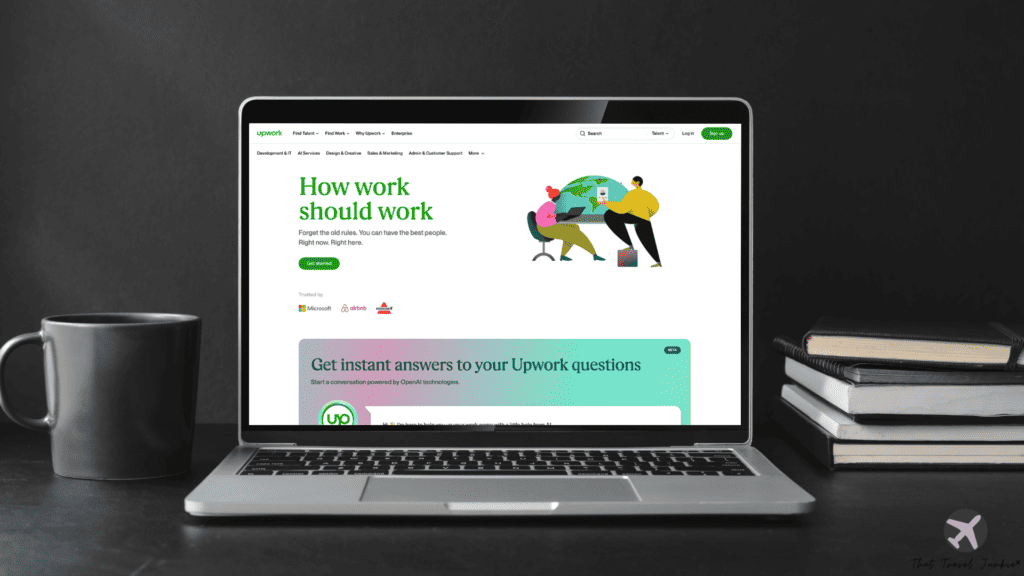
Step 4: Taxes For Digital Nomads
The life of a digital nomad still includes taxes – I know, that sucks. Different countries have different rules, and your home country still wants its share even when you’re out seeing the world.
I’ve learned to set aside a portion of my income for taxes to avoid surprises later. It’s super important to keep track of all your earnings and expenses because they’ll come in handy during tax season.
While you do need to pay your own self-employment taxes as a freelancer, you do get some added tax benefits and deductions.
There are tax professionals out there who specialize in digital nomads, but personally, I just use TurboTax and YouTube to help me master tax season.
💡Pro Tip: If you’re self-employed, you’ll want to start paying your estimated taxes quarterly to avoid paying any penalties. Although my first year I did get penalized for paying too much 😅 wtf.
Step 5: Renew Your Passport and Driver’s License
Make sure your passport and driver’s license are up-to-date. You’ll want to start this process early since getting new documents takes time.
A valid passport needs enough empty pages for stamps and can’t expire within six months of your arrival in any country.
For driving in a different country, you can either use your home driver’s license or you’ll need to get an international driver’s license. So make sure to look up the laws for wherever you want to go. When I went to Spain, I had to pay $25 at AAA for an international driver’s license that lasted for a year.
Step 6: Figure Out Your New Monthly Budget
Depending on how much you’ll be making with your new job, you need to figure out your new monthly budget.
This is how I like to break down my finances:
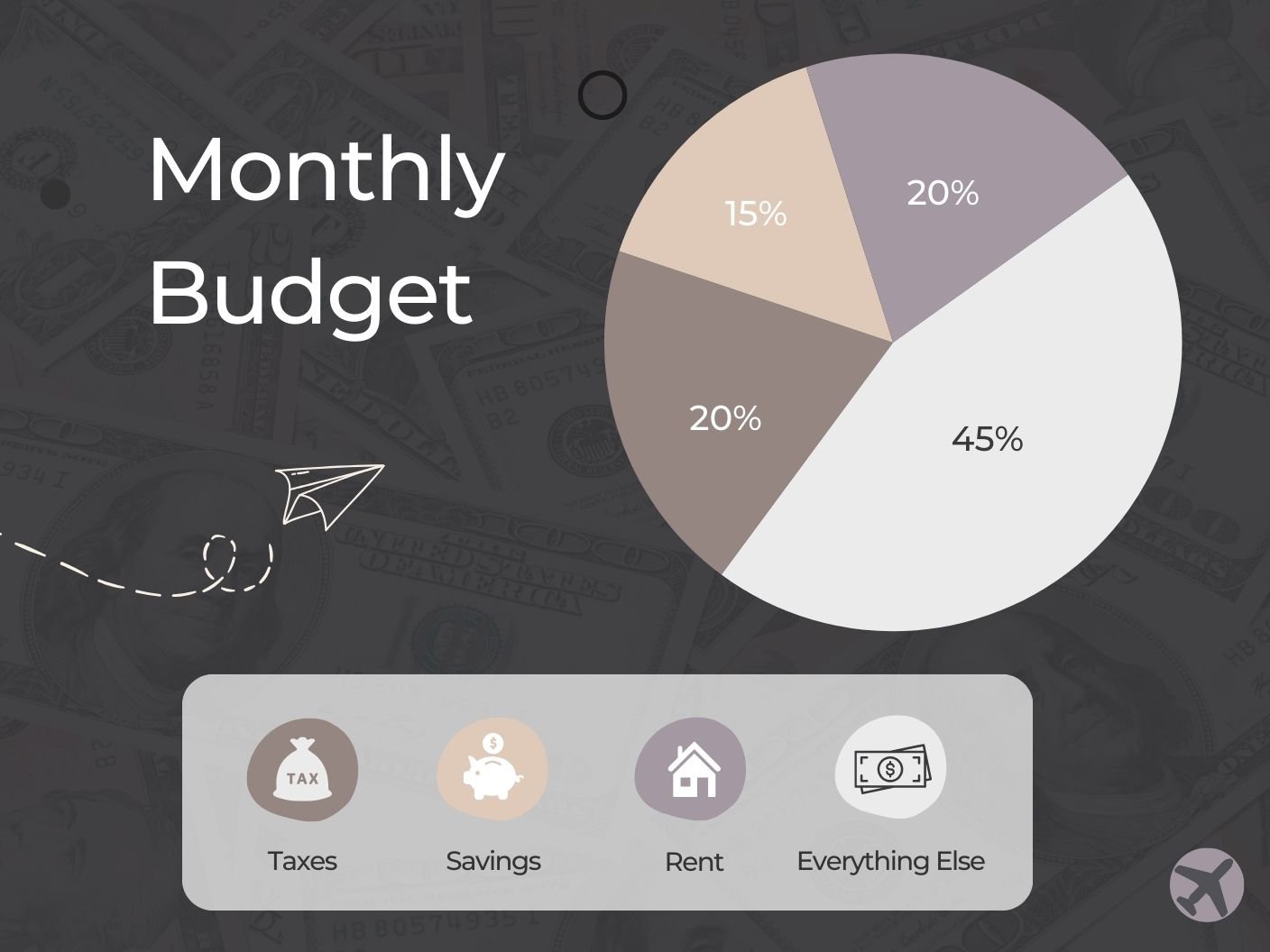
Total Income: $6,000/month
- 20% set aside for taxes ($1,200)
- 15% put into savings ($900)
- 20% or less for rent ($1,200)
- 45% on everything else ($2,700)
I first put that $2,700 into my bills like health insurance, phone bill, etc., and then the remaining goes into groceries, transportation, entertainment, etc.
This way of budgeting helps me manage money as a digital nomad. It also makes sure I have enough savings for any unexpected costs that may come up.
As a nomadic minimalist, it’s super important to separate your essentials versus wants.
Step 7: Get a Digital Nomad Travel Credit Card
I highly recommend getting a travel credit card! Great digital nomads have a lot of discipline, which is definitely needed for using credit cards too.
Treat your credit card like a debit card – only spend money that you have sitting in your bank.
That being said, credit cards are great for travel hacking because they give you travel rewards for cheap flights and hotels, and they give you travel perks.
These are my two recommendations:
Capital One® Venture X® – it’s a $395 annual fee but you get:
- $300 annual travel credits
- 10,000 miles per year (equal to $100)
- $100 Global Entry or TSA PreCheck® Credit
- Airport lounge access with 2 free guests per visit
- No foreign transaction fees
- $800 in cell phone protection if you pay your phone bill with this card
- Up to $2,000 in trip cancellation insurance if you’re sick or injured (not including hotel reservations)
- Up to $500 if your trip is delayed more than six hours
- Up to $3,000 for lost or damaged luggage
- Up to $75,000 for rental car collision
Chase Sapphire Reserve® Credit Card – it’s a $550 annual fee but you get:
- $300 annual travel credits
- Lyft, DoorDash, and Instacart credits
- $100 Global Entry or TSA PreCheck® Credit
- Airport lounge access with 2 free guests per visit
- No foreign transaction fees
- Up to $10,000 in trip cancellation insurance if you’re sick or injured (including hotel reservations)
- Up to $500 if your trip is delayed more than six hours
- Up to $3,000 for lost or damaged luggage
- Up to $100 per day for five days if your baggage is delayed over six hours
- Up to $75,000 for rental car collision
- $50 per incident, 4x per year for roadside assistance
- Up to $2,500 for emergency medical expenses while traveling
I love these cards because you get soo much back for the annual fee, it pretty much evens out. My favorite perk is the airport lounge access – it makes travel days much more fun and is a lifesaver during long layovers. They also both use transferable points so you can transfer the reward points to different airlines and hotels.
If you’re looking for a more budget-friendly option, I’d recommend:
Chase Sapphire Preferred – it’s a $95 annual fee but you get:
- $50 back per year after booking a hotel through Chase’s travel portal
- Some Lyft, DoorDash, and Instacart perks
- No foreign transaction fees
- Up to $10,000 in trip cancellation insurance if you’re sick or injured (including hotel reservations)
- Up to $500 if your trip is delayed more than 12 hours
- Up to $100 per day for five days if your baggage is delayed over six hours
The Chase Sapphire Preferred still offers good travel insurance when you use it to book your trips – just without the lounge access.
Last year, I herniated a disc in my lower back the day I was supposed to fly to Amsterdam, so I had to rest and delay my trip. I sent my receipts to Chase’s claim portal and I was able to get a full refund for my flight and hotels that I was missing. It was such a relief to get reimbursed for that.
No matter which one you choose, make sure to compare all their features like sign-up bonuses and points systems since they can really help cut down on your travel expenses. And don’t forget to check out any fees or rates.
If you want to dive deeper into travel hacking, I recommended taking this free points & miles course by 10x Travel.
Step 8: Figure Out Where to Travel
When choosing the best digital nomad location for you, consider the cost of living, quality of life, visa requirements, general internet connection in that country, safety, and how big of an expat or digital nomad community there might be.
Popular Digital Nomad Destinations
- Lisbon, Portugal: Lisbon mixes great weather with historical beauty. It’s becoming Europe’s new hub for digital nomads thanks to its tech scene and English-friendly environment.
- Chiang Mai, Thailand: Known for its low cost of living and rich culture. It hosts meetups for digital nomads and has plenty of coworking spaces.
- Medellín, Colombia: Once known for dangerous streets, Medellín has transformed into a safe and inviting city. Its eternal spring weather and affordable lifestyle are big draws.
- Bali, Indonesia: Bali is a paradise! Affordable living costs, stunning scenery, and a strong community of remote workers. Cafes with fast Wi-Fi are everywhere.
- Mexico City, Mexico: One of the largest cities in the world and has a thriving tech scene. It’s also known for its vibrant culture, delicious food, and affordable cost of living.
- Budapest, Hungary: Stunning architecture and buzzing nightlife. It’s pretty cheap to live here compared to other European cities.
- Tbilisi, Georgia: Offering a one-year visa on arrival for many nationalities, Tbilisi is gaining popularity among digital nomads. It combines low living expenses with rich history.
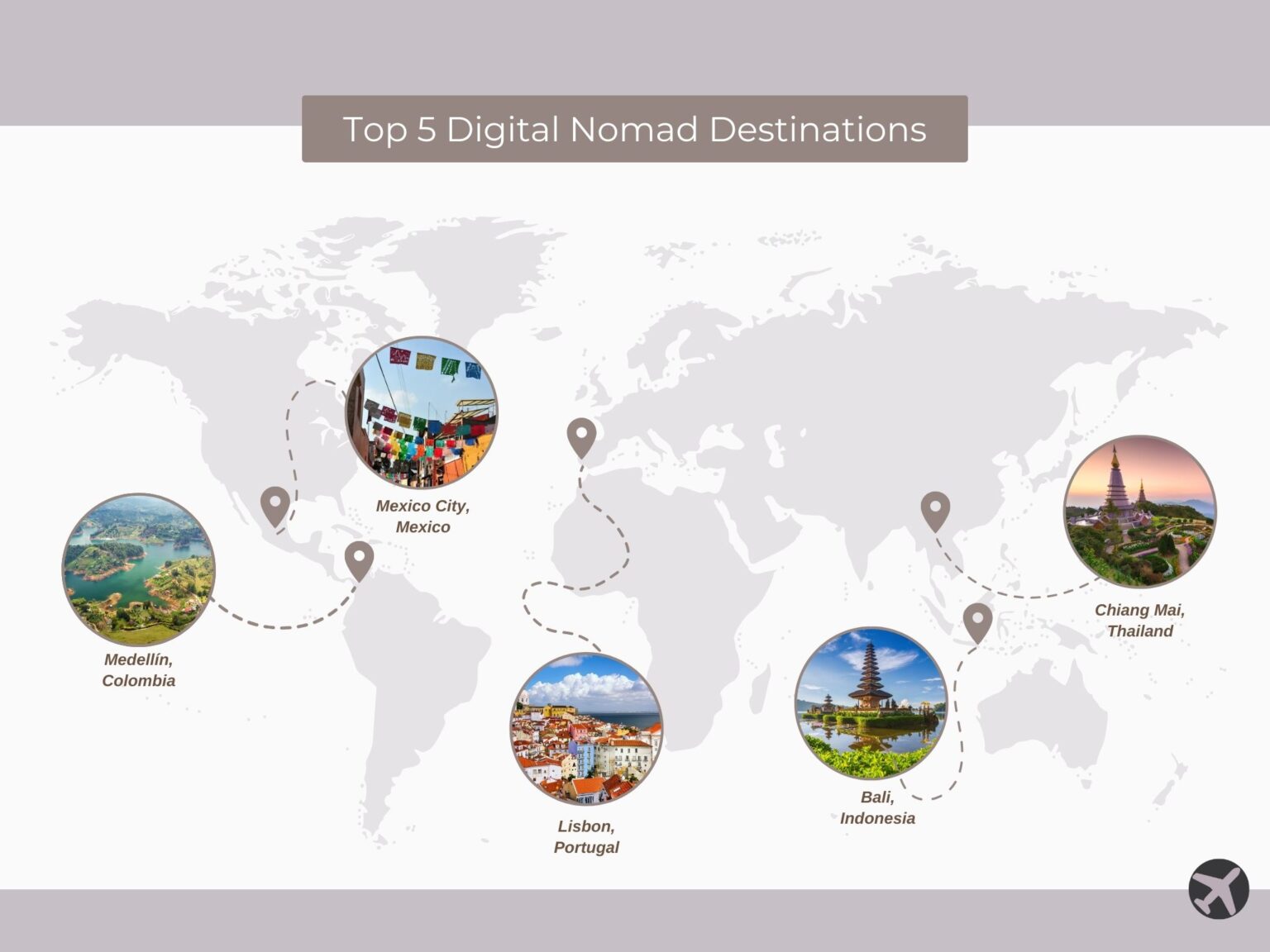
Step 9: Find Accommodation and Living Arrangements
There are tons of different digital nomad accommodation options you can choose from.
You can look for short-term rentals on Airbnb or VRBO, co-living spaces specifically for digital nomads, house-sitting or swapping, remote work-friendly hostels, etc.
Co-living spaces give a sense of community – they’re perfect when you want to mix work with socializing. But they usually have at least a one-month minimum, so if you’re staying for a shorter period then hostels will give you a similar vibe.
I often use HomeExchange where I swap houses with people all over the world. This is perfect for me since I live alone in Los Angeles, which is a popular destination people want to travel to. But if you don’t have a house to swap, then TrustedHousesitters is great for pet-sitting in people’s homes while they’re out of town.
Step 10: Book Your Plane Ticket
Once you know your exact start date and destination, it’s time to book your plane ticket!
Most likely you’ll want to book a one-way flight at first to leave room for a flexible schedule – because trying to plan for a few months out can be hard.
Especially if you’re traveling alone for the first time, it’s important to keep an open mind and be flexible with your plans. This lets you embrace unexpected adventures and meet new people along the way. And I’ve definitely missed out on some cool opportunities I found on the road by having a set plane ticket back to the US.
Remember, the beauty of solo travel lies in discovering yourself as much as it does in exploring new places.
Step 11: Get Necessary Travel Vaccines and Visas
Try to look into any travel vaccines and visas you’ll need at least two or three months before you leave.
Depending on where you’re going, you’ll need to make appointments with your doctor to get any vaccines required to visit certain countries. You also might need to apply for some longer-term visas.
Countries like Malta, Brazil, and Portugal offer digital nomad visas for longer stays, so look into those if they’re on your list.
You’ll also want to look into specific tax regulations for remote workers depending on where you’re going.
Step 12: Get Travel Health Insurance
I know the last thing you want is to spend extra money on travel health insurance when you might not even use it, but it’s better to be safe than sorry. You don’t want to be hit with a huge bill later, and it’s nice to have peace of mind knowing you’re covered if something goes wrong.
These insurances help cover you for any accidents or illnesses while you’re traveling. Just make sure to read the policy details closely so you have a good understanding of what’s covered and what’s not.
Some of the more popular travel medical insurance for digital nomads are Safety Wing and World Nomads.
Step 13: Get Your Gear Ready
I always make sure my digital nomad gear is ready to go before hitting the road.
A reliable laptop is essential – it’s my office, entertainment, and connection to clients all in one. Make sure everything is up-to-date to enhance security and avoid any tech mishaps abroad.
Don’t forget some good headphones and a microphone if your job requires Zoom meetings as well.
Step 14: Optimize Your Digital Workflow
Payment Methods and Banks
Personally, I think that paying for things abroad with a 0% foreign transaction fee credit card is the way to go.
But if you don’t want to use a credit card, then it’s good to use financial services that specialize in multi-currency accounts, like Revolut or Wise. These platforms allow users to hold and exchange money in various currencies at real-time exchange rates, which can really reduce costs when making transactions abroad.
You’ll probably need to withdraw cash at some point, so you’ll want to make sure you have a debit card associated with international banks for easy ATM withdrawals. I use Bank of America in the US, so when I go abroad, I look up what their banks are called in the country I’m in to take out cash with lower fees. (Just Google your bank + ‘international partners’)
But no matter which debit card you have, you can usually use any ATMs affiliated with major international networks (like Visa or Mastercard) to get a better exchange rate with lower fees.
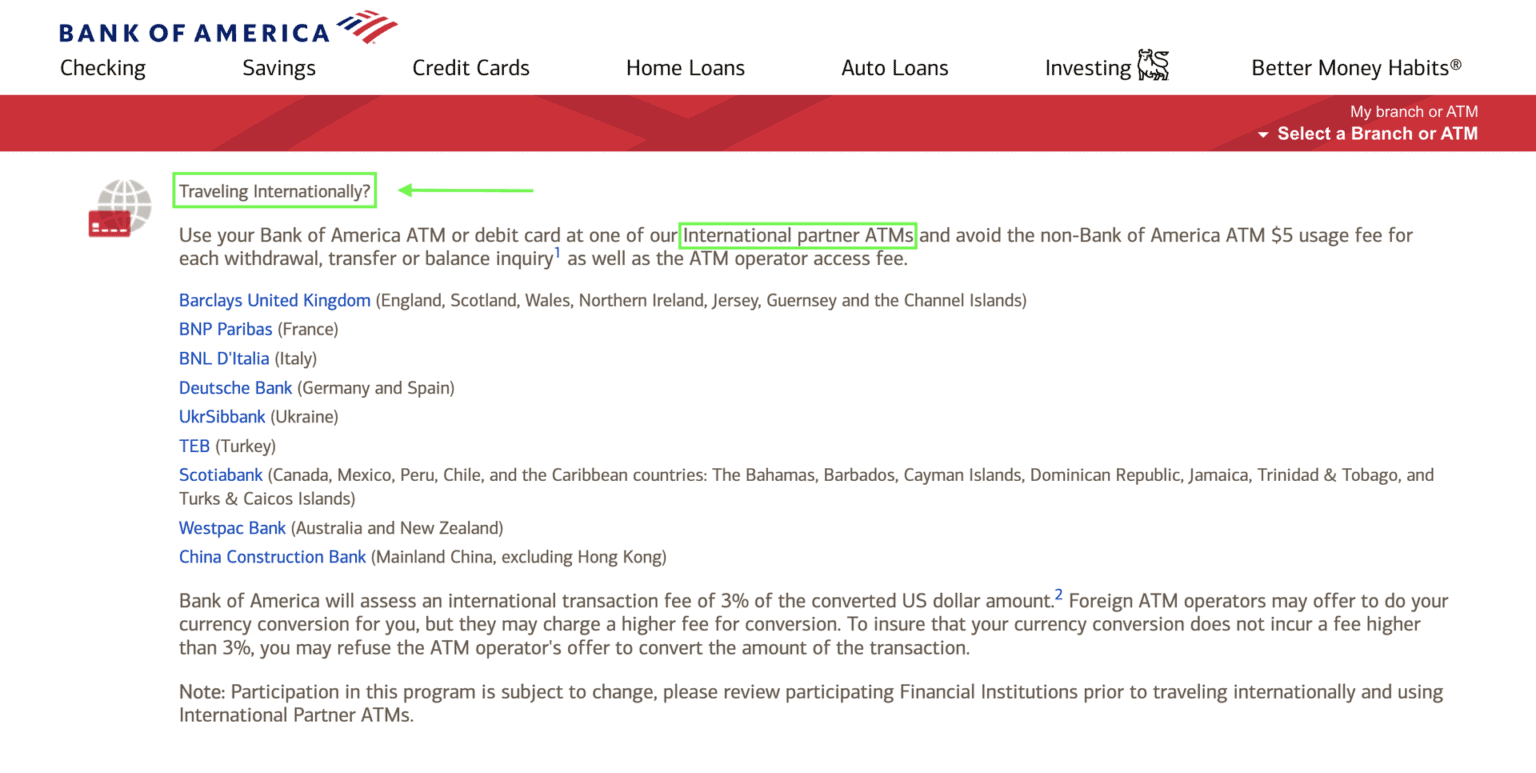
Picking a VPN to Stay Secure
A VPN, or Virtual Private Network, acts as a secure tunnel between your device and the internet. It protects your online data, making it difficult for hackers to see your internet activity.
Not only does this protect your data from prying eyes, but it also allows you to access restricted content, such as streaming services and websites that aren’t available in the country you’re traveling in.
Digital nomads typically use public WIFI, so a VPN is a great tool for maintaining privacy and protecting their data no matter where they go.
You simply download the VPN to your computer or phone and then just toggle it on. Some popular ones used by digital nomads are ExpressVPN, NordVPN, and CyberGhost. I typically look for ones that don’t keep logs of my activity and have tough encryption.
Virtual Mailbox
A virtual mailbox is a cool way you can get your mail no matter where in the world you are. This is especially useful for digital nomads, who may not have a permanent address but still need a reliable way to get mail.
Basically, a virtual mailbox gives you a physical street address for receiving letters and packages, but then a service provider will scan and upload your mail to a secure online platform where you can view it. How cool is that?!
Popular virtual mailbox platforms that digital nomads usually use are Earth Class Mail and Anytime Mailbox.
Accounting Software
Accounting software is super useful for keeping track of money while on the go.
Since I do freelance services, I created an in-depth Google spreadsheet that I update once a week with my expenses and income, making sure everything balances out. But if you run an online business and have contractors on payroll or want an easier way to keep track of invoices, then investing in accounting software might be best.
Some popular choices among digital nomads are QuickBooks and FreshBooks, which both offer mobile apps for when you’re on the go.
Step 15: Plan For How You’ll Get Around
I always think about how I’ll move around in a new city.
Will you be within walking distance of the city center or at least be close to good public transportation?
Sometimes you’ll have to rent a car. And that’s okay, just make sure to have a game plan before you get there.
💡Pro Tip: Some cities don’t have Uber, so make sure you have a plan for how you’ll get from the airport to your accommodation.
Step 16: Pack the Essentials
Only pack the essentials!! Packing minimally will save a ton of space and make it easier to move around from city to city.
Some basic travel necessities include your laptop and headphones (duh), a portable charger, an outlet adapter, sunglasses, etc.
My long-term travel packing list always includes a capsule wardrobe with a million options to mix and match.
But remember, you can always buy more once you’re there, especially if you’re missing something. So don’t overpack!
Step 17: Collect All the Necessary Documents
Collect all your documents in one place
- Passport
- Visas or travel permits
- Driver’s license (& international driver’s license)
- Social security card
- Medical records
- Insurance documents
Using the free app, Evernote, on your phone is a great way to collect all your documents in one easily accessible place.
Step 18: Set up Your Esim
Long gone are the days you need a physical SIM card to access phone data in another country. Now, we have the beautiful eSIM!
Most smartphones from the last couple of years are eSIM compatible, but check your phone to make sure. It’ll be best to purchase an eSIM plan before you head out for your trip, and the company will give you instructions on how to install it onto your phone.
Usually, there’s a certain ‘Activate’ button to start using your plan, so you can set it all up before you leave and then click ‘Activate’ once you get to your destination to start using your phone.
Sometimes WIFI in the airport can be unreliable, so if you’re planning to take public transportation or a ride-share service from the airport, it’ll be helpful if your phone data is working.
Some popular eSIM providers among digital nomads are Airalo, Holafly, and Nomad. These platforms offer flexible plans across numerous countries and regions.
Step 19: Emergency Backup Plans
Think of some ‘what if’ worst-case scenarios and have a plan in place just in case any of those happen. (but fingers crossed it won’t 🤞)
- What if you’re having trouble making money as a digital nomad? → Keep an emergency savings fund
- What if your wallet gets stolen? → Keep a small amount of cash and one extra credit card in different areas of your luggage
- What if you lose your phone? → Backup all your data to the cloud and write down the most important contact numbers
- What if something happens to you? → Share your itinerary with friends and family back home and establish regular check-ins (my mom makes me give her a code word so she knows I’m not in distress lol)
- What if you get lost and your phone dies? → Learn some of the most basic phrases in the local language
- What if you get hurt? → Travel health insurance!
Tips for a Successful Digital Nomad Journey
Budgeting on the Road
It’s so important to keep track of your finances while you’re traveling.
I use a Google spreadsheet to keep track of my monthly income and expenses, but then I use the app, YNAB (You Need A Budget), on my phone to keep track of how much money I have left to spend for the month.
Part of being a digital nomad means having unstable income streams, so budgeting is essential to make sure you’re not overspending.
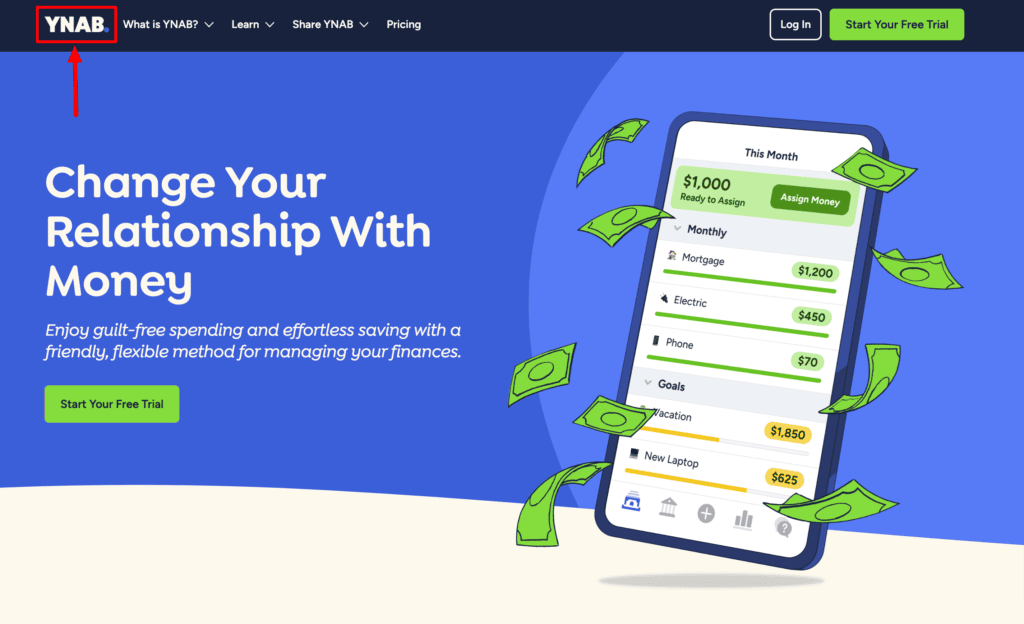
Setting the Pace
Figure out what a good travel pace is for you.
Personally, I love slow travel, which typically means staying in one city for a few weeks or even months. This gives me time to really soak in each city while still having time to get all my work done.
Rushing from place to place can lead to burnout quickly. Instead, plan your travels so you have enough time for both work and fun.
Choosing Your Digital Nomad Resources
I get it, it sucks to pay extra for tools and platforms, but usually they’re so worth it.
Using tools like Trello or Asana can massively help you keep track of all your tasks, especially if you’re working with contractors.
I use the free version of Slack to help me stay in touch better with clients and contractors.
I also pay monthly for Dropbox, which helps me access all my files from anywhere, and Envato Elements, which gives me editing templates and stock videos for my projects.
While it’s a pain to pay for these things, it’d be more of a pain not to have them.
Time Management and Discipline
If you want to be a digital nomad, you’ll need time management and discipline to be successful.
I use tools like Toggl and Clockify to keep track of my time on each project, making sure I meet deadlines and don’t get too far off track.
Taking regular breaks throughout the day can boost your focus and productivity. It helps keep me refreshed, so when I get back to work, I’m more effective.
Find a balance that works best for you.
Making friends
Every digital nomad needs virtual and in-person friends to help you stay motivated with like-minded people.
Join online communities in Facebook Groups where you can find loads of advice and information.
And be open to talking to strangers while you’re traveling. You can even find Facebook groups based around digital nomad communities in the city you’re visiting and do a meetup.
This support network will become invaluable over time, especially when you’re feeling homesick.
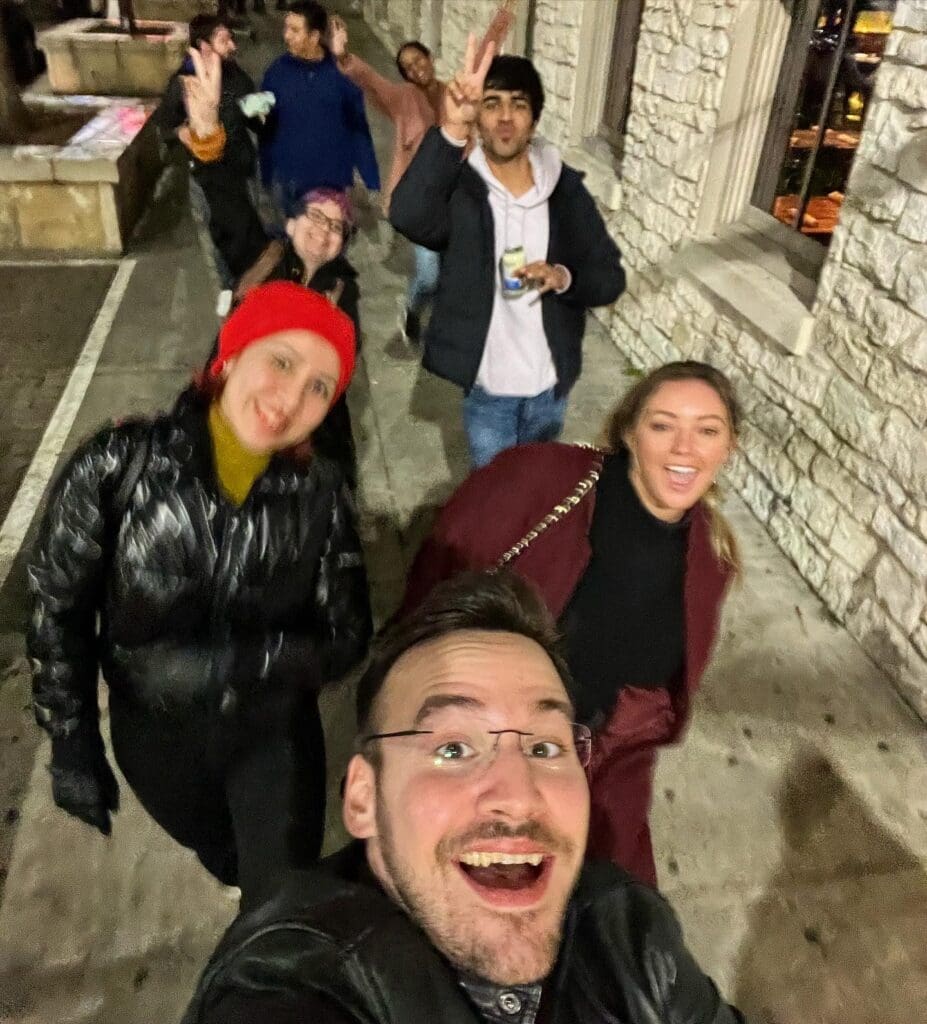
Stay Flexible and Open-Minded
Successfully living the digital nomad lifestyle isn’t for people set in their ways – it’s all about adapting to new situations, whether it’s a last-minute change in travel plans or a sudden shift in work.
Embracing this kind of flexibility has allowed me to thrive as a digital nomad, making the most out of every opportunity that comes my way.
When I first started traveling, I would make sure to have my entire trip planned out in detail and book everything before I left. I quickly learned that most travelers don’t do this. Instead, they wait to see who they meet and where the road takes them.
It’s all about being willing to step outside your comfort zone and learn new ways of living and working.
Long-Term Strategies for Digital Nomads
Maintaining Work-Life Balance
Finding the right work-life balance can keep you from burning out.
It’s also important to set clear boundaries with your clients about when you’re available so you’re not working late into the night or skipping out on adventure time.
Regularly checking in on your health and taking days off when needed are part of maintaining this balance too. It’s all about making your digital nomad life sustainable in the long run.
Continuous Learning and Skill Upgrading
It’s important to always update your digital nomad skills and learn new things to stay ahead in this fast-paced digital world. You can attend workshops, join online courses, and go to conferences.
Staying competitive means never stopping your education.
Planning for Retirement
Digital nomads often overlook planning for retirement, but it’s crucial. I set aside 15% of my income and always max out my Roth IRA every year. If I spend less than my allotted budget in a month, the extra goes straight to my brokerage account.
Especially since you most likely won’t have an employer match benefit for a 401K, saving for retirement on your own will make all the difference in the long run and help you have peace of mind while you’re out exploring the world.

What’s the Digital Nomad Lifestyle Like?
I quit my full-time video marketing job over two years ago and decided to become a nomad. I wanted the freedom to work remotely and travel on my own schedule without needing to report back to a boss or ask for time off.
Personally, I love being a part-time nomad and having a home base to come back to after a few months of traveling – that’s just what works for me. There’s really no wrong way to do it.
I remember meeting this 50-something-year-old guy at my hostel in Morocco who had moved to a new country every five years to experience new things and learn whatever that country was famous for.
He mastered the tango in Argentina, cooking in Italy, karate in Japan, etc. I was so inspired by him! Being able to live wherever and do whatever you want just seemed like the ultimate freedom.
But while living as a nomad does have its perks, I would also imagine that moving every five years like this guy would be a little lonely – always having to start over in a new country.
There’s always going to be some disadvantages of traveling, like feeling lonely or disconnected at times.
But you just need to figure out what your priorities are and find a unique way to make that work for you – living the life YOU want.

Conclusion: How to Become a Digital Nomad With No Experience
Becoming a digital nomad with no skills or experience is possible – you just need to find an entry-level job that lets you work from anywhere.
Remember that life as a digital nomad isn’t just about traveling and working remotely, it’s also about finding the ultimate freedom to live life on your own terms.
Why wait until retirement to travel when you can be out there adventuring now? (Especially while you’re still physically capable of making the most of your journey.)
If you’re ready to get started but still need to find a job, check out my article on digital nomad jobs for beginners to get some inspiration for entry-level work you can start doing now!
Frequently Asked Questions
How hard is it to become a digital nomad?
Becoming a digital nomad can be challenging, especially in the initial weeks without a steady routine. It takes time to build the necessary skills and find opportunities, even with little-to-no experience. But with determination and the right resources, you have everything you need to make this lifestyle transition successful.
What is the downside of being a digital nomad?
One downside of being a digital nomad is the potential for loneliness and isolation, as constant travel can make it challenging to maintain long-term relationships and connections. Also, navigating time zones and reliable internet access can be stressful. That’s why being a digital nomad doesn’t suit everyone.
Who qualifies as a digital nomad?
A digital nomad is anyone who uses technology to work remotely from different locations and isn’t confined to a traditional office setting. This lifestyle is possible for freelancers, entrepreneurs, and employees with a job that allows remote work, as long as they have a reliable internet connection.
What are the best digital nomad jobs?
The best digital nomad jobs are ones you can find online that offer remote work opportunities. Popular choices are working as an SEO specialist, freelance writing or graphic design, and online teaching. These positions give you the chance to work online and travel at the same time.

